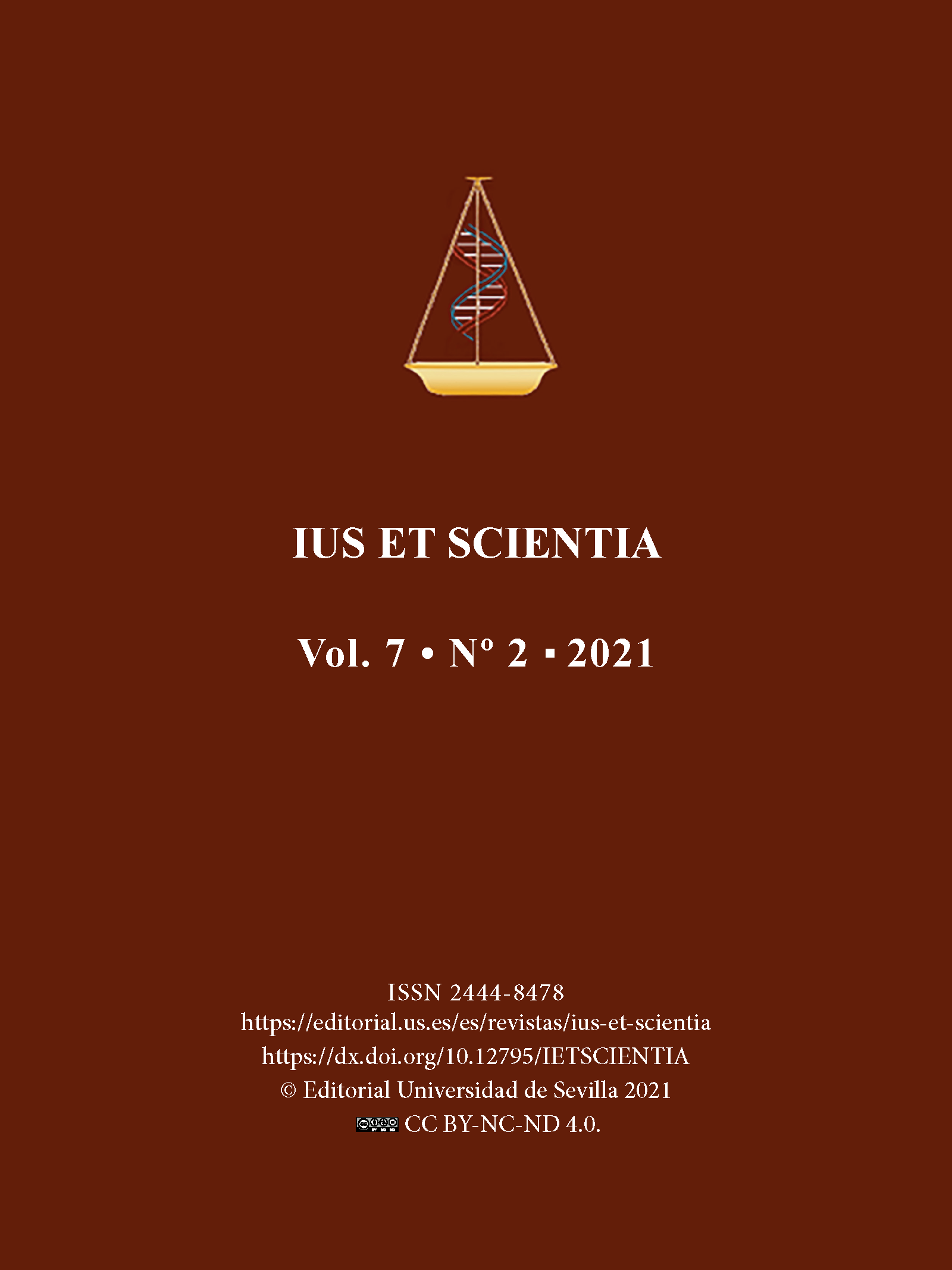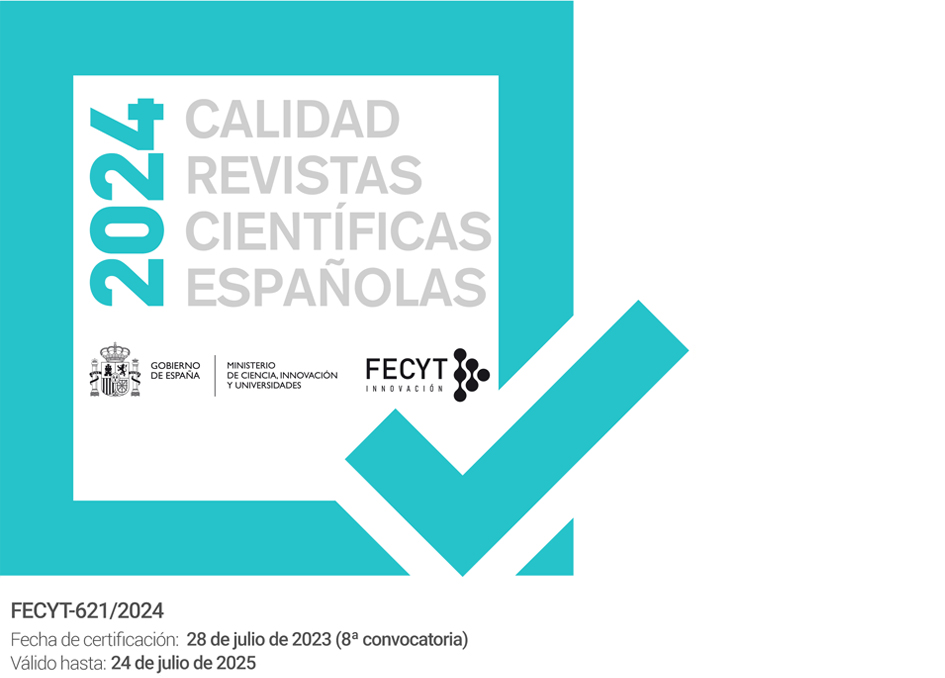Algoritmos en el estrado, ¿realmente los aceptamos? Percepciones del uso de la inteligencia artificial en la toma de decisiones jurídico-penales
DOI:
https://doi.org/10.12795/IETSCIENTIA.2021.i02.05Palabras clave:
Justicia penal, Inteligencia Artificial (IA), Algoritmo, Riesgo de reincidenciaResumen
La irrupción que las prácticas basadas en la evidencia, la automatización de decisiones y la inteligencia artificial han tenido en nuestra sociedad también ha alcanzado al sistema de justicia penal. Jueces y operadores jurídicos comienzan a interactuar con este tipo de herramientas aún sin tener la información suficiente sobre su modo de empleo ni sobre el impacto que realmente pueden llegar a tener. Todo ello, unido a la falta de regulación legal y de requisitos éticos para su utilización, parece estar generando entre la ciudadanía controversias, críticas e incluso cierto rechazo hacia la implementación de tales tecnologías. Con una muestra de 359 participantes, este estudio ofrece una primera aproximación al grado de aceptación ciudadana que existe en relación con el uso de la inteligencia artificial para la toma de decisiones jurídico-penales. Los resultados obtenidos apuntan a que tal nivel de aceptación es bajo, lo cual abre camino al debate sobre qué condiciones y límites deben imponerse para que la aplicación de estas tecnologías sea legítima y acorde a los principios de todo Estado social, democrático y de Derecho.
Descargas
Citas
AMADOR HIDALGO, L. (1996). Inteligencia artificial y sistemas expertos. Universidad de Córdoba.
ANDRÉS PUEYO, A., Y ECHEBURÚA, E. (2010). Valoración del riesgo de violencia: instrumentos disponibles e indicadores de aplicación. Psicothema, 22(3), 403-409.
ANDRÉS PUEYO, A., Y REDONDO ILLESCAS, S. (2007). Predicción de la violencia: entre la peligrosidad y la valoración del riesgo de violencia. Papeles del Psicólogo, 28(3), 157-173.
ANDRÉS-PUEYO, A. (2017). Manual de evaluación del riesgo de violencia. Metodología y ámbitos de aplicación. Ismael Loinaz. Anuario de Psicología Jurídica, 27, 127-129.
ARAUJO, T., HELBERGER, N., KRUIKEMEIER, S., Y DE VREESE, C.H. (2020). In AI we trust? Perceptions about automated decision-making by artificial intelligence. AI & SOCIETY, 35, 611-623. https://doi.org/10.1007/s00146-019-00931-w
BAKER, R. S. (2016) Stupid tutoring systems, intelligent humans. International Journal of Artificial Intelligence in Education, 26 (2), 600-614.
BOTNICK, C. (2015). Evidence-Based Practice and Sentencing in State Court: A Critique of the Missouri System. Wash. UJL & Pol’y, 49, 159– 180.
CAPDEVILA, M., et al. (2015). Tasa de reincidencia penitenciaria 2014. Centro de Estudios Jurídicos y Formación Especializada, Generalitat de Catalunya.
COHEN, J. (1992). A power primer. Psychological bulletin, 112(1), 155.
COUSIN, G. (2005). Case study research. Journal of geography in higher education, 29(3), 421-427.
DE MICHELE, M., BAUMGARTNER, P., BARRICK, K., COMFORT, M., SCAGGS, S., Y MISRA, S. (2019). What do criminal justice professionals think about risk assessment at pretrial. Fed. Probation, 83, 32.
DIETVORST, B., SIMMONS, J.P., Y MASSEY, C. (2015). Algorithm Aversion: People Erroneously Avoid Algorithms after Seeing Them Err. Journal of Experimental Psychology: General, 144 (1), 114-126. http://dx.doi.org/10.1037/xge0000033
FREEMAN, K. (2016). Algorithmic injustice: How the Wisconsin Supreme Court failed to protect due process rights in State v. Loomis. North Carolina Journal of Law & Technology, 18(5), 75.
GALLO, J. A. (2006). Errores y sesgos cognigtivos en la expansión del Derecho Penal. In Derecho y justicia penal en el siglo XXI: liber amicorum en homenaje al profesor Antonio González-Cuéllar García (pp. 31-48). Constitución y Leyes, COLEX.
GALLO, J.A. (2011). Las decisiones en condiciones de incertidumbre y el derecho penal. Revista para el Análisis del Derecho, 4.
GARRET, B.L., Y MONAHAN, J. (2020). Judging Risk. California Law Review ,108, 438-493.
GASEK, J. (2019). Community First: Why California’s Elimination of Cash Bail May Have Missed the Mark. McGeorge L. Rev., 51, 1.
GRAY, PAMELA N. Artificial legal intelligence. Ashgate Publishing Company, 1997.
GUTHRIE, C., RACHLINSKI, J. J., Y WISTRICH, A. J. (2001). Inside the judicial mind. Cornell Law Review, 86, 777-830.
HARTLEY, J. (2004). Case study research. In. Catherine Cassel e Gilian Symon. Essential guide to qualitative methods in organizational research.
JEE, K., Y KIM, G-H. (2013). Potentiality of big data in the medical sector: focus on how to reshape the healthcare system. Healthc InformRes, 19(2), 79-85.
KAHNEMAN, D. Y TVERSKY, A. (1979). Prospect Theory: An Analysis of Decision under Risk. Econometrica, 47(2), pp. 263-291.
KAHNEMAN, D. Y TVERSKY, A. (1983). Extensional vs. intuitive reasoning: the conjunction fallacy in probability judgment. Psychological Review, 90(4), 293-315
KAHNEMAN, D., SLOVIC, P., Y TVERSKY, A (Eds.) (1982). Judgment under uncertainty: Heuristics and biases. New York: Cambridge University Press.
KAHNEMAN, D., Y TVERSKY, A. (1972). Subjective probability: a judgment of representativeness. Cognitive Psychology, 3, 430-454.
KAHNEMAN, D., Y TVERSKY, A. (1973). On the psychology of prediction. Psychological Review, 80, 237-251.
KEHL, D., GUO P., Y KESSLER, S. (2017). Algorithms in the criminal justice system: assessing the use of risk assessments in sentencing. Berkman Klein Center for Internet & Society.
KIM, G-H., TRIMI, S., Y CHUNG, J-H. (2014). Big-Data Applications in the Government Sector. Communications of the ACM, 57(3), 78-85.
KYUNG LEE, M. (2018). Understanding perception of algorithmic decisions: Fairness, trust, and emotion in response to algorithmic management. Big Data & Society, 5 (1), 1-16. https://doi.org/10.1177/2053951718756684
LOINAZ, I. (2017). Manual de evaluación del riesgo de violencia. Metodología y ámbitos de aplicación. Pirámide.
MARTÍNEZ GARAY, L. (2018). Peligrosidad, algoritmos y due process: el caso State vs. Loomis. Revista de Derecho Penal y Criminología, 20, 485-502.
MARTÍNEZ GARAY, L. (2020). Evidence-based sentencing y evidencia científica. A la vez, algunas consideraciones sobre “políticas basadas en la evidencia” y el Derecho Penal. Teoría y Derecho: revista de pensamiento jurídico, 20, 238-277.
MARTÍNEZ GARAY, L., Y MONTES SUAY, F. (2018). El uso de valoraciones del riesgo de violencia en Derecho Penal: algunas cautelas necesarias. Revista para el Análisis del Derecho, 2, 2-47.
MCKAY, C. (2020). Predicting risk in criminal procedure: actuarial tools, algorithms, AI and judicial decision-making. Current Issues in Criminal Justice, 32(1), 22-39.
MIRÓ LLINARES, F. (2018). Inteligencia artificial y Justicia Penal: Más allá de los resultados lesivos causados por robots. Revista de Derecho Penal y Criminología, (20), 87-130.
MIRÓ LLINARES, F. (2020). Predictive Policing: Utopia or Dystopia? On attitudes towards the use of Big Data algorithms for law enforcement. Revista de Internet, Derecho y Política, (30).
MUÑOZ ARANGUREN, A. (2011). La influencia de los sesgos cognitivos en las decisiones jurisdiccionales: el factor humano. Una aproximación. Indret: Revista para el Análisis del Derecho, 2.
MYERS, D. G., Y LAMM, H. (1976). The group polarization phenomenon. Psychological Bulletin, 83, 602–27.
PIERSON, E. (2018). Demographics and discussion influence views on algorithmic fairness
ROBINSON (2013). Intuitions of Justice and the Utility of Desert. New York: Oxford University Press.
ROBINSON, P. H. (2000). Testing Lay Intuitions of Justice: How and Why? Hofstra Law Review, 28.
ROBINSON, P. H., Y DARLEY, J. M. (2007). Intuitions of justice: Implications for criminal law and justice policy. S. Cal. L. Rev.,81.
ROBINSON Y DARLEY (1995). Justice, Liability, and Blame. Community Views and the Criminal Law. Boulder: Westview Press.
SAXENA, N. A., HUANG, K., DEFILIPPIS, E., RADANOVIC, G., PARKES, D. C., Y LIU, Y. (2020). How do fairness definitions fare? Testing public attitudes towards three algorithmic definitions of fairness in loan allocations. Artificial Intelligence, 283.
SCURICH, N., Y KRAUSS, D.A. (2019). Public’s Views of Risk Assessment Algorithms and Pretrial Decision Making. Psychology, Public Policy and Law, 26(1), 1-32.
SELWYN, N. (2015). Data entry: towards the critical study of digital data and education. Learning, Media and Technology, 40(1),64–82.
SIEGEL, E. (2016). Predictive Analytics. The power to predict who will click, buy, lie or die. New Jersey: John Wiley and Sons.
SINGH, J. P., KRONER, D. G., WORMITH, J. S., DESMARAIS, S. L., Y HAMILTON, Z. (Eds.). (2018). Handbook of recidivism risk/needs assessment tools. John Wiley & Sons.
SKEEM, J., SCURICH, N., Y MONAHAN, J. (2020). Impact of risk assessment on judges’ fairness in sentencing relatively poor defendants. Law and human behavior.
SOLER, C. (2013). RisCanvi. Protocolo de evaluación y gestión del riesgo de violencia con población penitenciaria. Foro internacional de buenas prácticas en prevención de la delincuencia juvenil. Disponible online en https://www2.congreso.gob.pe/sicr/cendocbib/con4_uibd.nsf/138A3DBF8E8A85B905257C9F00803A14/$FILE/LinkClick6.pdf
SOLAR CAYÓN, J. I. (2020). La inteligencia artificial jurídica: nuevas herramientas y perspectivas metodológicas para el jurista. Revus. Journal for Constitutional Theory and Philosophy of Law/Revija za ustavno teorijo in filozofijo prava, (41).
STARR, S.B. (2014). Evidence-based sentencing and the scientific rationalization of discrimination. Stan L Rev,66, 842-873
STEVENSON, M. T., Y DOLEAC, J.L. (2019). Algorithmic Risk Assessment in the Hands of Humans. IZA-Institute of Labor Economics Discussion Paper Series, 12853. Disponible en línea en https://www.iza.org/publications/dp/12853/algorithmic-risk-assessment-in-the-hands-of-humans
STEVENSON, M.T., Y DOLEAC, J.L. (2018). The Roadblock to Reform. American Constitution Society.
SUNDAR, S., Y NASS, C. (2001). Conceptualizing sources in online news. Journal of Communication, 51(1), 52–72.
SWANBORN, P. (2010). Case study research: what, why and how?. Sage.
TERRANOVA, V. A., WARD, K., SLEPICKA, J., & AZARI, A. M. (2020). Perceptions of Pretrial Risk Assessment: An Examination Across Role in the Initial Pretrial Release Decision. Criminal Justice and Behavior, 47(8), 927–942. https://doi.org/10.1177/0093854820932204
TYLER, T.R. Y JACKSON, J. (2014). Popular legitimacy and the exercise of legal authority: Motivating compliance, cooperation and engagement. Psychology, Public Policy and Law, 20, 78-95. DOI: http://dx.doi.org/10.1037/a0034514
VAN DIJCK, J. (2014). Datafication, dataism and dataveillance: big data between scientific paradigm and ideology. Surveillance & Society, 12(2), 197-208.
WASON, P. (1960). On the failure to eliminate hypotheses in a conceptual task. Quarterly Journal of Experimental Psychology, 12, 129–140.
Publicado
Cómo citar
Número
Sección
Licencia
Aquellos autores/as que tengan publicaciones con esta revista, aceptan los términos siguientes:- Los autores/as conservarán sus derechos de autor y garantizarán a la revista el derecho de primera publicación de su obra, el cuál estará simultáneamente sujeto a la Licencia de reconocimiento de Creative Commons que permite a terceros compartir la obra siempre que se indique su autor y su primera publicación esta revista.
- Los autores/as podrán adoptar otros acuerdos de licencia no exclusiva de distribución de la versión de la obra publicada (p. ej.: depositarla en un archivo telemático institucional o publicarla en un volumen monográfico) siempre que se indique la publicación inicial en esta revista.
- Se permite y recomienda a los autores/as difundir su obra a través de Internet (p. ej.: en archivos telemáticos institucionales o en su página web) antes y durante el proceso de envío, lo cual puede producir intercambios interesantes y aumentar las citas de la obra publicada. (Véase El efecto del acceso abierto).




